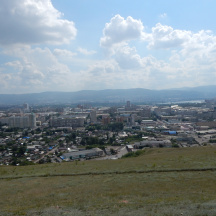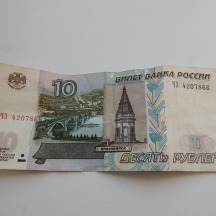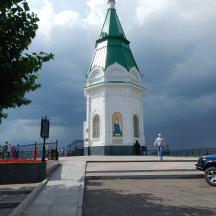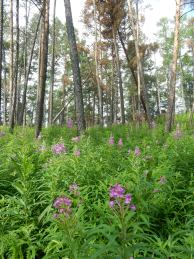Krasnoyarsk
- Corinne Leech

- Aug 17, 2016
- 3 min read
The Iris hotel in Krasnoyarsk is a perfect little hotel. It was originally a girls’ school dating back to the 19th century and is tucked away in a courtyard behind one of the main shopping streets, close to the River Yenisey. A very early check-in was no problem.
High on a hill overlooking Krasnoyarsk is the Chasovnya Chapel. It features on the 10 ruble note and has a commanding view over the city. A good start to exploring the city.
Back down to the river to see the SV Nickolai, a paddle steamer that had transported Lenin to exile in the village of Shushenskoe in 1897. Tsar Nikolai II had also been on board in 1891. Manned by enthusiasts who kept her in pristine condition, it showcased the possessions of crew and passengers in her heyday. Included was the story of how ‘Rusian Hill’ in San Francisco got its name. Russian seamen who had died of an illness whilst at anchor were respectfully buried there.
The Yenisey River is big and marks the unofficial border between east and west Siberia. I’d already crossed the 1 kilometre long bridge on the train. After a stroll along the riverside, darkening clouds and thunder made me head back to the hotel.
The following morning I was off to see the Stolby nature reserve in the hills behind the bridge. It’s famous for its volcanic rocks set amongst the pine trees. After my experience at Lake Baikal I opted to go on a guided tour. It was a good decision. Anatoliy picked me up at 9.30 and I joined Sebastian and Anna, two students from Cologne University.
We climbed up through the pine forests and passed the tick warning sign. Anatoliy assured us that the last tick he’d seen had been in June, unusually early for them to disappear. So, there had been no need for that tick encephalitis jab. I did note that he was still wearing his top of the range anti tick gear though.
After reaching the Takmak Stolby we carried on up the hill and could see other stolbys across the valley, just emerging from the pine trees. After walking up part of a ski run, we were then rewarded by a swift descent on a chair lift. Although built for the ski resort, it is used throughout the year to give greater access to the mountains.
The public only have access to 4 percent of the nature reserve. There is a buffer zone where permits are needed for entry, and the rest is totally protected by strict regulations. That’s where the bears live.
It had been a super walk. The morning light mist had soon cleared once the sun came out. The smell of the pine, wild flowers, the satisfaction of reaching a viewpoint and pleasant company were the essential ingredients.
After Anatoliy dropped us off, we had a leisurely cup of coffee by the river before Sebastian and Anna made their way to the train, heading east to Beijing. They had a cautionary tale to tell. At Omsk they had followed the guidebook suggestion to use the 20 minute stop to see a statue of Lenin. The train left without them. Evidently, the expressions on their faces meant that no Russian was needed to convey what had happened. All was well in the end. They were reunited with their belongings at Krasnoyarsk. Just a new ticket to be bought and a two hour wait for the next train.

Time for a final wander around Krasnoyarsk. Just a few older wooden buildings remain, some fine government buildings, a square with a statue of Lenin and lots of attractive bronze sculptures scattered around the pavements.
Although Stolby was the reason for stopping at Krasnoyarsk, the city was a pleasant place to stay. With Vladivostok and Khabarovsk a long way behind and the Urals fast approaching, it must mean that western is a lot smaller than eastern Siberia. Maybe that’s why the border offered by the River Yenisey is only unofficial.
Next stop Yeketerinburg.












































Comments